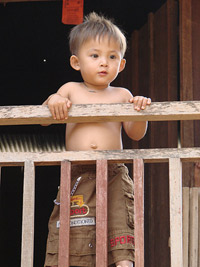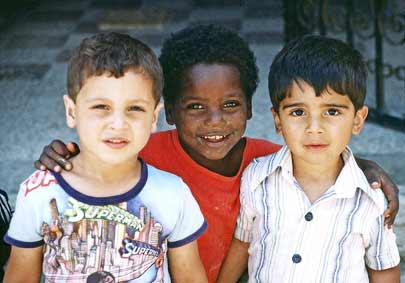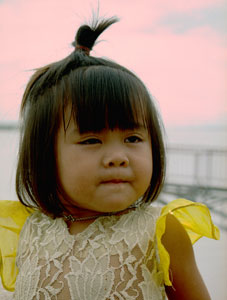The Committee on the Rights of the Child
Role and competence – Study of reports and communications
The role of the Committee is to ensure respect and implementation of the Convention on the Rights of the Child. To ensure the implementation of the Convention, the Committee on the Rights of the Child has several functions.
Review of State Reports
Under Article 44 of the Convention on the Rights of the Child, the Committee studies reports which must be submitted by States.
 In fact, States are requested to provide an initial report on the situation of the Rights of the Child in their territory two years after acceding to the Convention. They must then present the Committee regular reports every five years on the evolution of the situation of the Rights of the Child and efforts of implementation of the Convention in their legislation.
In fact, States are requested to provide an initial report on the situation of the Rights of the Child in their territory two years after acceding to the Convention. They must then present the Committee regular reports every five years on the evolution of the situation of the Rights of the Child and efforts of implementation of the Convention in their legislation.
To guide the State’s parties in the presentation and writing of their report, the Committee adopted guidelines during its first session in October 1991. According to these guidelines reports must indicate, on the one hand, ‘factors and difficulties’ confronted by the State in the implementation of the Convention, and on the other hand, ‘specific priorities and objectives’ that States set out to achieve.
During these sessions, the Committee reviews the regular reports and then discusses on camera, (in private), with the representatives of States, to understand the reasons for the State’s weaknesses and make suggestions to help them fulfill their commitments. A real dialogue is established between the Committee and the States that encounter difficulties in the implementation of the Convention.
At the same time, the Committee can receive NGO reports that it will examine and compare with State reports.

At the following session, States that have encountered difficulties are the object of particular attention. They must present a new overview of their national situation, as well as the measures that have been adopted to solve the problems of implementation of the Convention.
At the end of the discussions with the States and NGOs concerned, the Committee publishes a final Observation, (that summarizes the situation and discussions), that will have to be made public by the State in its country.
In 2000, the Committee’s competence in terms of control enlarged with the adoption of two protocols associated with the Convention :
- The optional protocol to the Convention on the Rights of the Child, concerning the involvement of children in armed conflicts;
- The optional protocol to the Convention on the Rights of the Child, concerning the sale of children, child prostitution and child pornography.
States that have ratified these protocols must provide supplementary reports about the national situation and efforts of implementing these texts.
The examination of communications
State communications
The Committee on the Rights of the Child (CRC) is competent to receive communications formulated by State’s parties on the alleged violations of the Convention by other State’s parties.
Therefore, the Committee is not competent to impose sanctions on a State when the violation of one of the Rights of the Child has been demonstrated. It is simply going to establish a constructive dialogue with the State concerned to find a rapid and efficient solution.
Individual communications
 The Committee has also, since the 28th May 2012, competence to deal with communications coming from individuals, in other words from persons, (the representatives of a child), claiming the violation of a right of the Convention by a State party.
The Committee has also, since the 28th May 2012, competence to deal with communications coming from individuals, in other words from persons, (the representatives of a child), claiming the violation of a right of the Convention by a State party.
You can visit the UN website to check the list of States Parties.
Therefore, the collective complaint system wasn’t approved.
It is also possible to use mechanisms set up by other international instruments that protect human rights.
Can examine, in certain circumstances, complaints concerning the violation of the Rights of the Child :
- The Human Rights Committee that protects the implementation of the international Covenant on Civil and Political Rights of 1966. An individual communication will be possible, if the State in question is a party to the protocol creating this Committee.
- The Committee against Torture can study individual communications on the State’s parties that have accepted the competence of the Committee, in accordance with Article 22 of the Convention against Cruel, Inhuman or Degrading torture and/or Punishment of 1984.
- The Committee On the Elimination of Racial Discrimination protects the implementation of the Convention on the Elimination of Racial Discrimination of 1965. Individuals communications are possible against the States that have accepted the competence of the Committee under article 14.
- The Committee on the Elimination of Discrimination against Women monitors the application of the, Convention on the Elimination of Discrimination against Women of 1979. Individual communications are possible against the State’s party to the Optional Protocol to the Convention on the Elimination of the Discrimination against Women.
- The Committee on the Right of Persons with Disabilities can review individual communications on the States to Optional Protocol to the Convention on the Right of Persons with disabilities of 2006.

